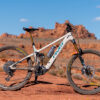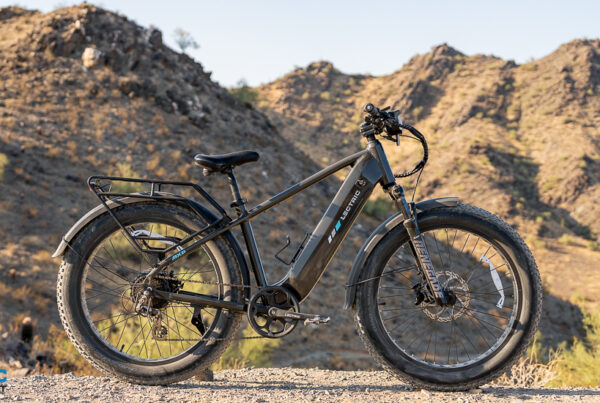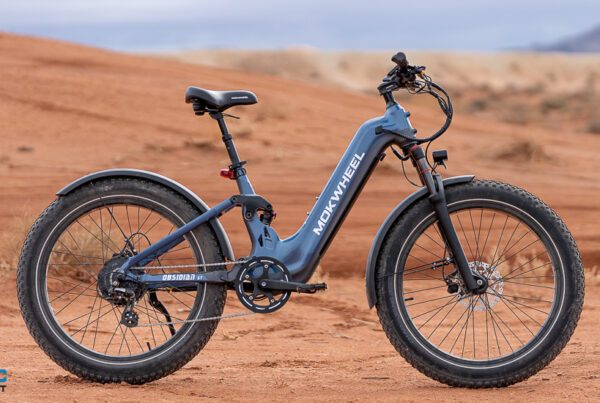Some links may be affiliate links. We may get paid if you buy something or take an action after clicking one of these.
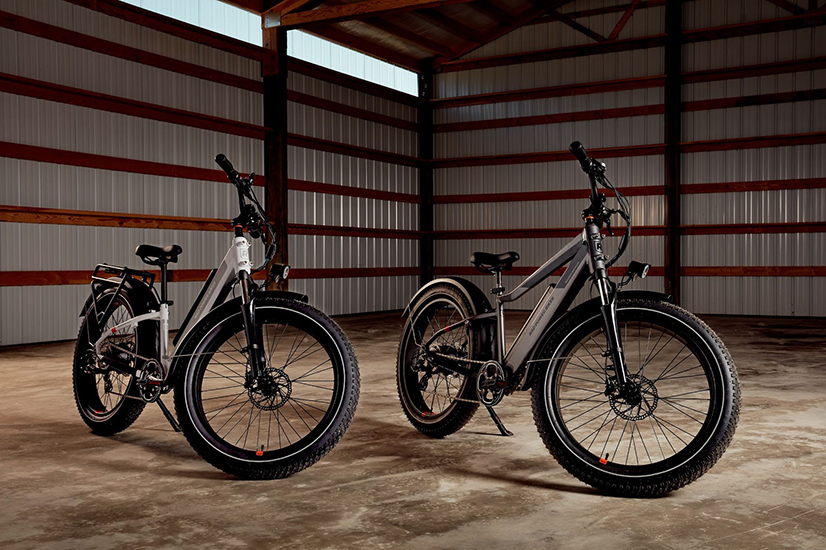
Rad Power Bikes announced the RadRover 6 Plus today, a complete redesign of their flagship electric fat bike that boasts a torquier motor, a new frame and a boatload of other new goodies.
The new RadRover 6 Plus represents a leap forward for the Seattle-based e-bike company. It’s the first time, according to Sr. Project Manager Tom Mount, that the company has been able to develop the majority of its drive system — the motor, controller and battery — in house.
“The new Rover 6 represents really a ground-up redesign of that bike,” Mount said. “It really represents not only what we’re investing in development and technology, but a bike that is really growing and changing as we are as a company.”
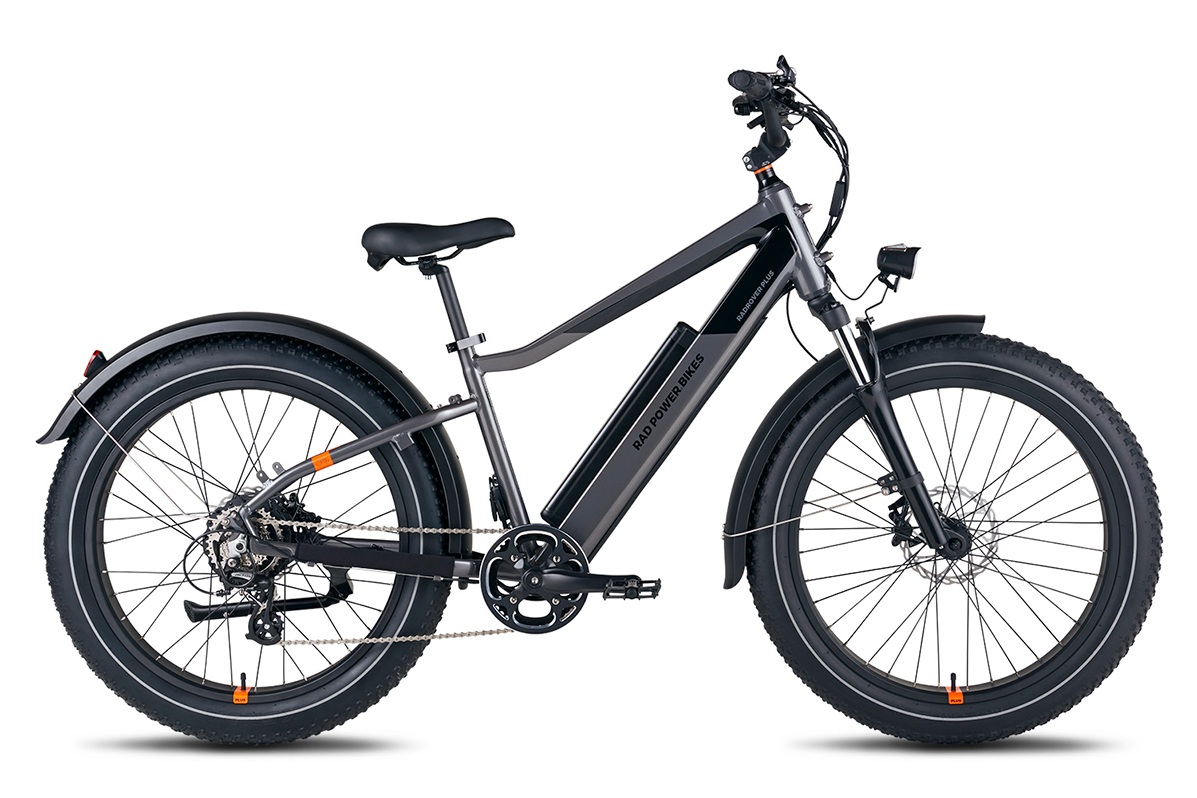
The new RadRover 6 is the first bike released since Rad raised a $150 million investment in February 2021; money that gave the e-bike company the financial bandwidth to better fund their in-house design and development efforts.
The Electric Bike Report staff hasn’t gotten to ride the new Rover yet (stay tuned, we should get the bike soon), but based on some sneak peaks and what we are told the new e-bike can do, it appears that investment is paying off.
So what’s new?
Well, everything really.
The new RadRover 6 Plus gets hydraulic brakes, a redesigned user interface that utilizes two handlebar displays, a fully redesigned frame, a new semi-integrated battery and a retooled 750W motor built with a greater emphasis on hill climbing power.
The RadRover 6 Plus motor, battery and controller
In addition to fully redesigning the frame, Rad Power Bikes did a whole overhaul of the Rover’s drive system; no longer is Rad buying off-the-shelf motors, batteries and controllers.
In previous versions of the Rover, Rad would select high-quality drive system components from third-party companies and improve upon them. But in the Rover 6, they took a holistic approach and designed the components in-house — retooling the controller, battery and motor in tandem to make a bike that’s got more low-end torque, has more hill climbing ability and even a longer range. The motor is still 750W and the battery is 48V, 14Ah — the same figures on the RadRover5. The controller box has also been moved from a mounting location on the seat tube, directly in front of the rear wheel to inside the frame — a big visual improvement.
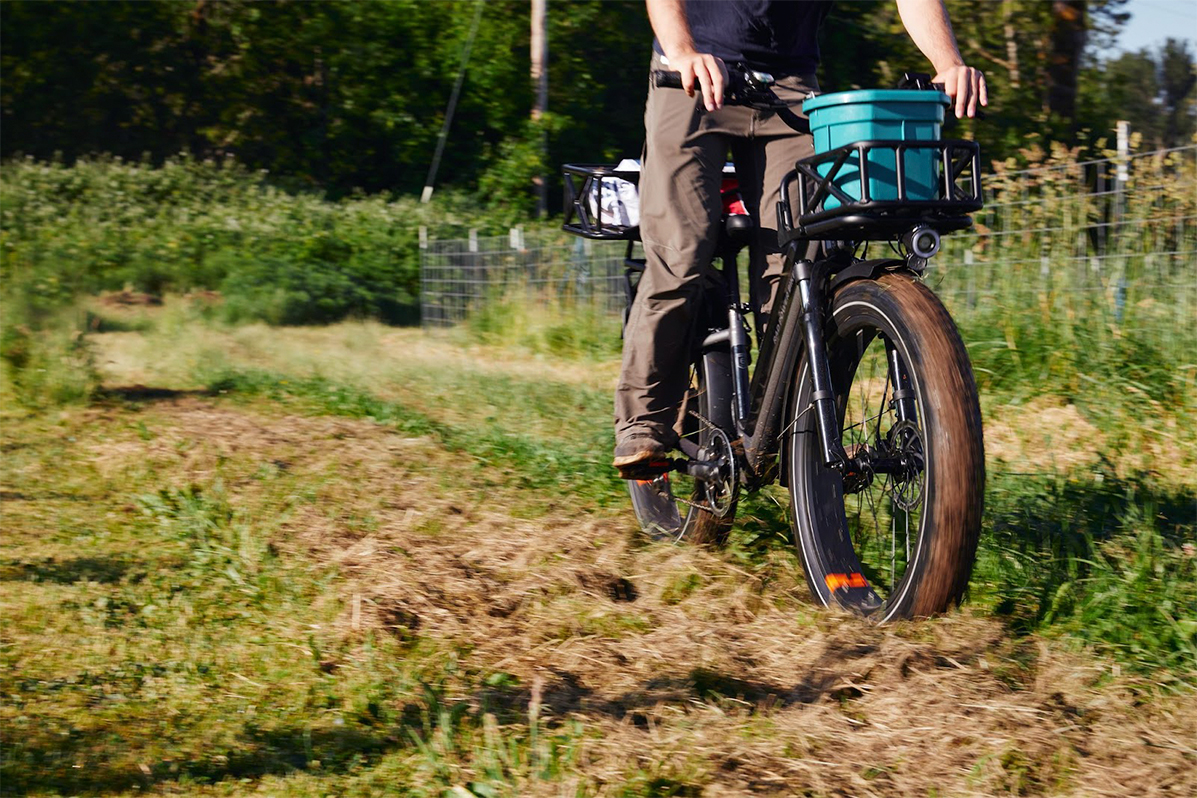
Mount said they spent a lot of time tinkering with the bike’s low-end torque to give it more legs climbing big hills. This was done by fine tuning the ratio of the planetary gears inside the hub motor. That specially-chosen ratio, known as the motor’s “winding,” is matched to the programming of the controller and the other electronics controlling the motor — making a perfectly in sync system.
“We’ve really been able to give that bike a much better, more consistent hill-climbing speed and a power band that’s longer and better for hill climbing,” Mount said.
They also squeezed more range out of the 672Wh battery and moved the controller box — which had previously been bolted to the seat tube directly in front of the rear wheel — inside the frame, which is a big visual improvement.
Not one, but two new displays
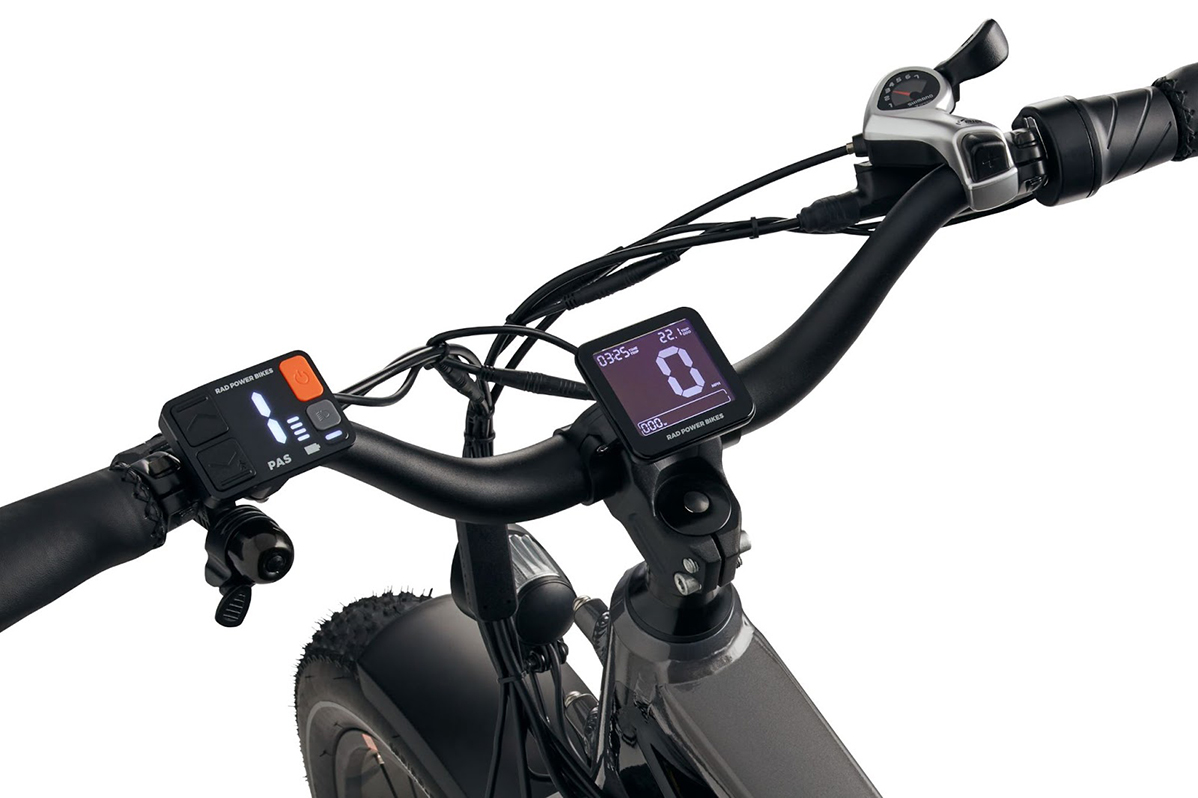
Rad also leaned on feedback from its customers and extensive network of retailers to redesign its user interface to be easier to use. There are now two displays on the RadRover 6’s handlebars: One, on the left side close to the left grip, has a power button, a button controlling the headlight and a way to cycle through the PAS settings. Another display on the stem in the center of the bars shows your typical readouts including speed, trip time, distance traveled and some other things.
On both displays, they’ve increased the readout size to make them easier to read. Mount said they’ve also improved the battery indicator and put a lot of emphasis on making the displays more intuitive and usable while riding.
A fully redesigned frame that’s lower and handles better
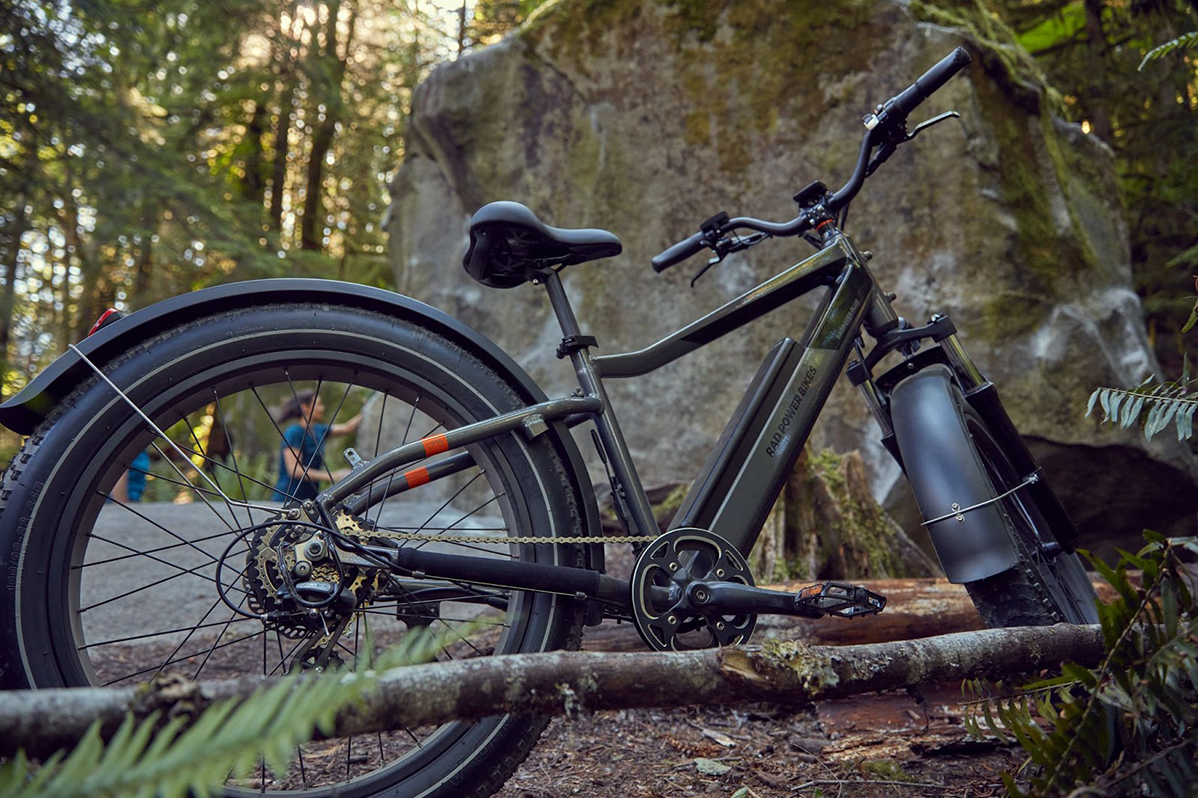
Though we haven’t been able to test the new Rover 6 yet, Mount said the most immediate difference most riders will feel is in how the front end of the bike handles.
They’ve slackened the headtube and partially integrated the battery into the frame, which made the center of gravity lower and made the steering less twitchy, and made the standover height lower so it’s easier for shorter riders to get on and off the bike.
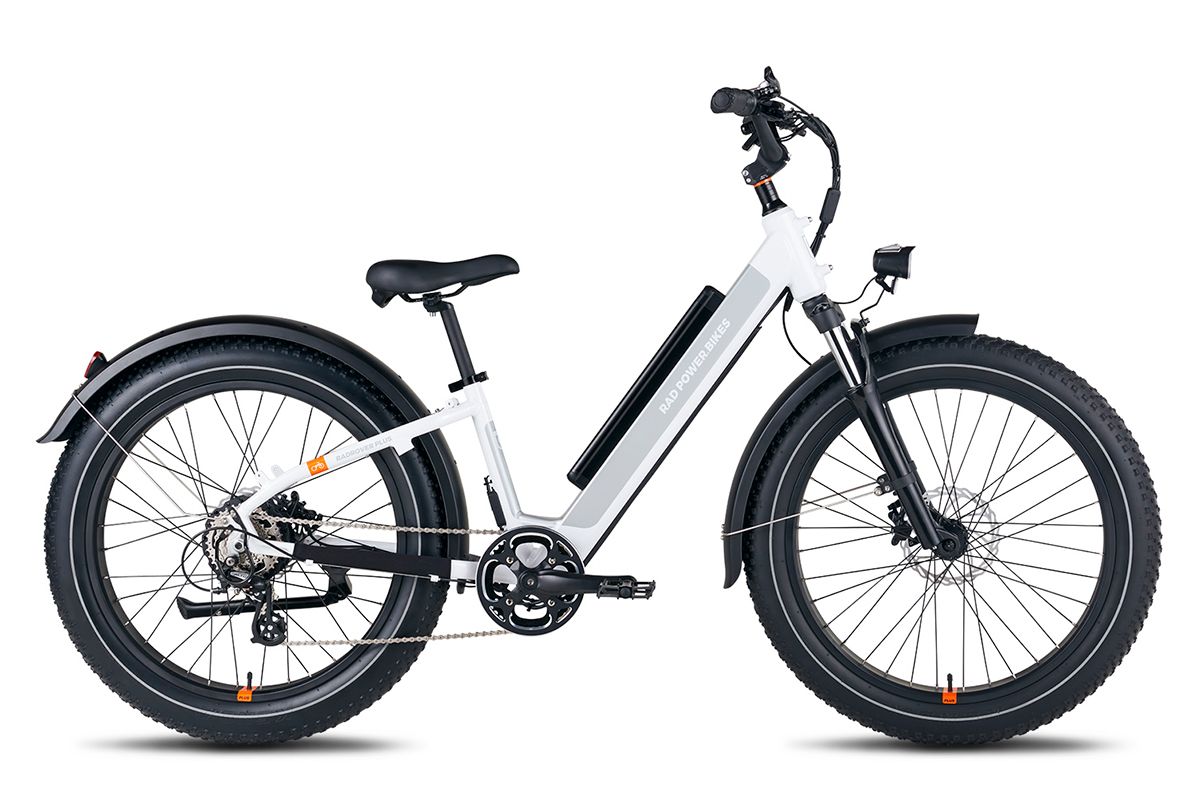
“The whole thing just rides way more behaved,” Mount said. “It’s just super stable and smooth at speed. It still gives you good low-speed and a nimble feel; it’s just a really fun and well-behaved bike.”
The frame also comes in a step-thru option for those who want to stretch less when mounting the bike, and, as I mentioned before, the battery is now semi-integrated. Rad said they chose to do this over fully integrating it into the frame because they didn’t feel the need to hide that it’s an e-bike.
Other features and spec details
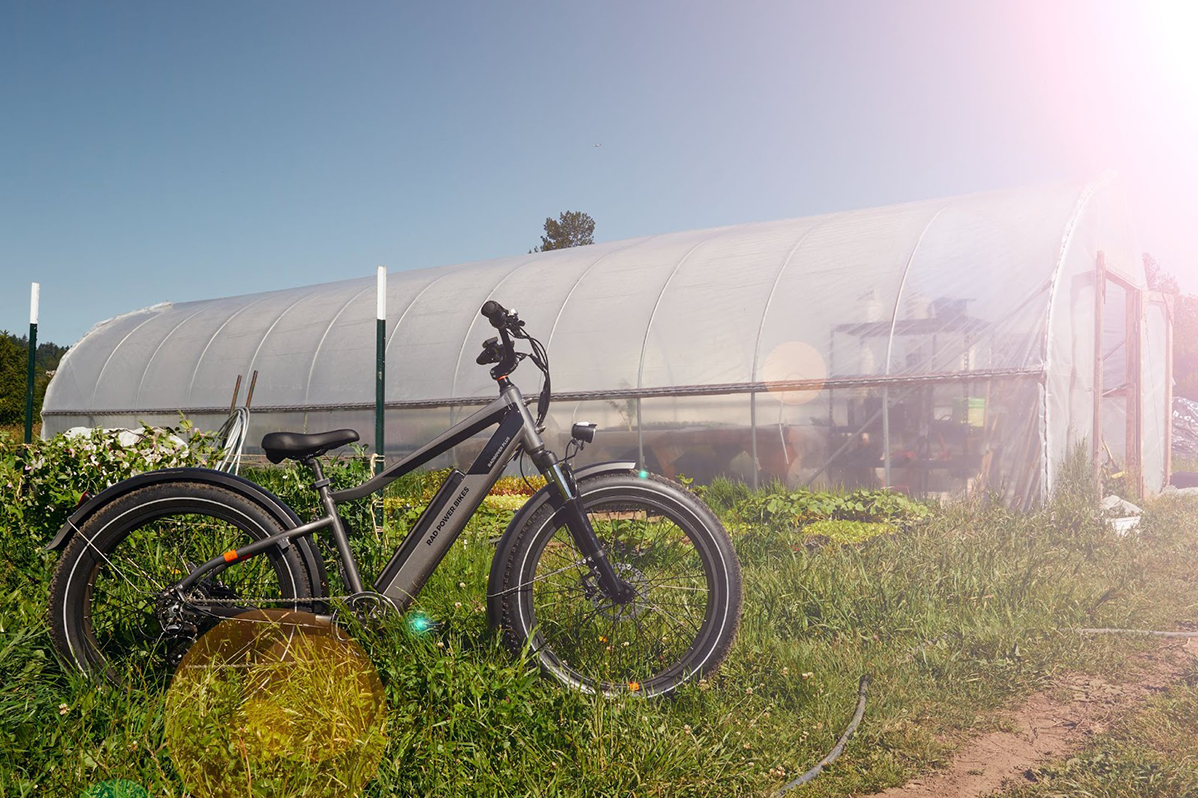
In addition to the hefty redesign, Rad’s also added some cool Easter egg improvements including a new cable routing through a plastic cover on the downtube. The Rover’s cables were previously internally routed, but this new feature makes them more accessible and easier to service.
The new Rover 6 is also now spec’d with hydraulic disk brakes front and rear, a notable upgrade from the mechanical Tektro brakes spec’d on the previous edition. Rad hasn’t disclosed what brand the brakes are, but says they’ll have 180mm rotors, ceramic pads and motor cutoff switches.
Like its predecessor, the RadRover 6 Plus will be spec’d with a 7-speed drivetrain, though Rad hasn’t disclosed what make that drivetrain will be. Our RadRover 5 test bike has the Shimano Acera drivetrain, so we’d expect it to be equal quality to that. Rad says it has various component suppliers they have “thoroughly vetted and tested,” but, due to the ongoing COVID-19 bike part shortage, there may be different components depending on availability.
The new RadRover 6 Plus retails for $1,999 and will be available for preorders starting right now. Customers should expect the bikes to start shipping by September 30.
Sponsors
Related
Reader Interactions
![]()
Source link






